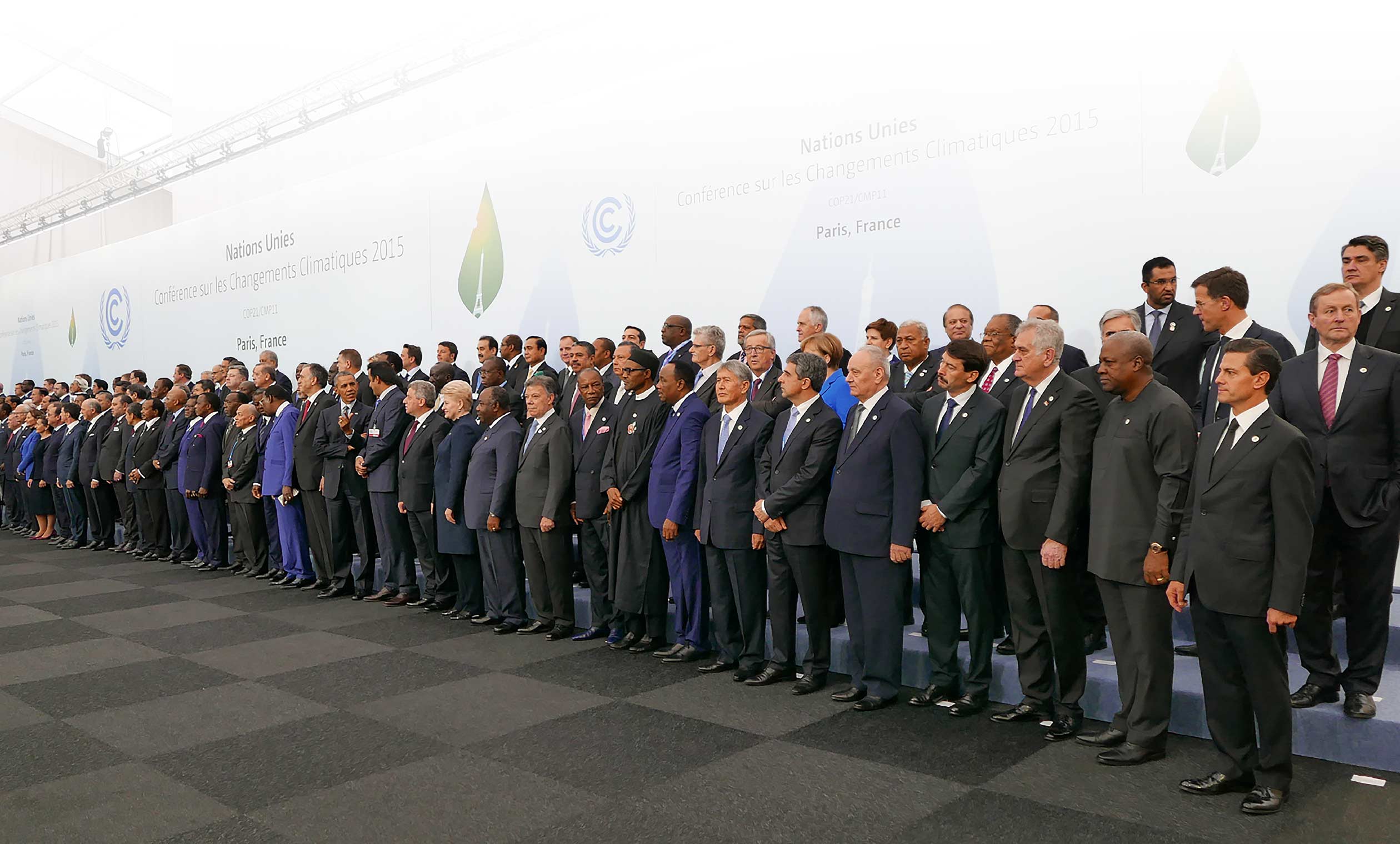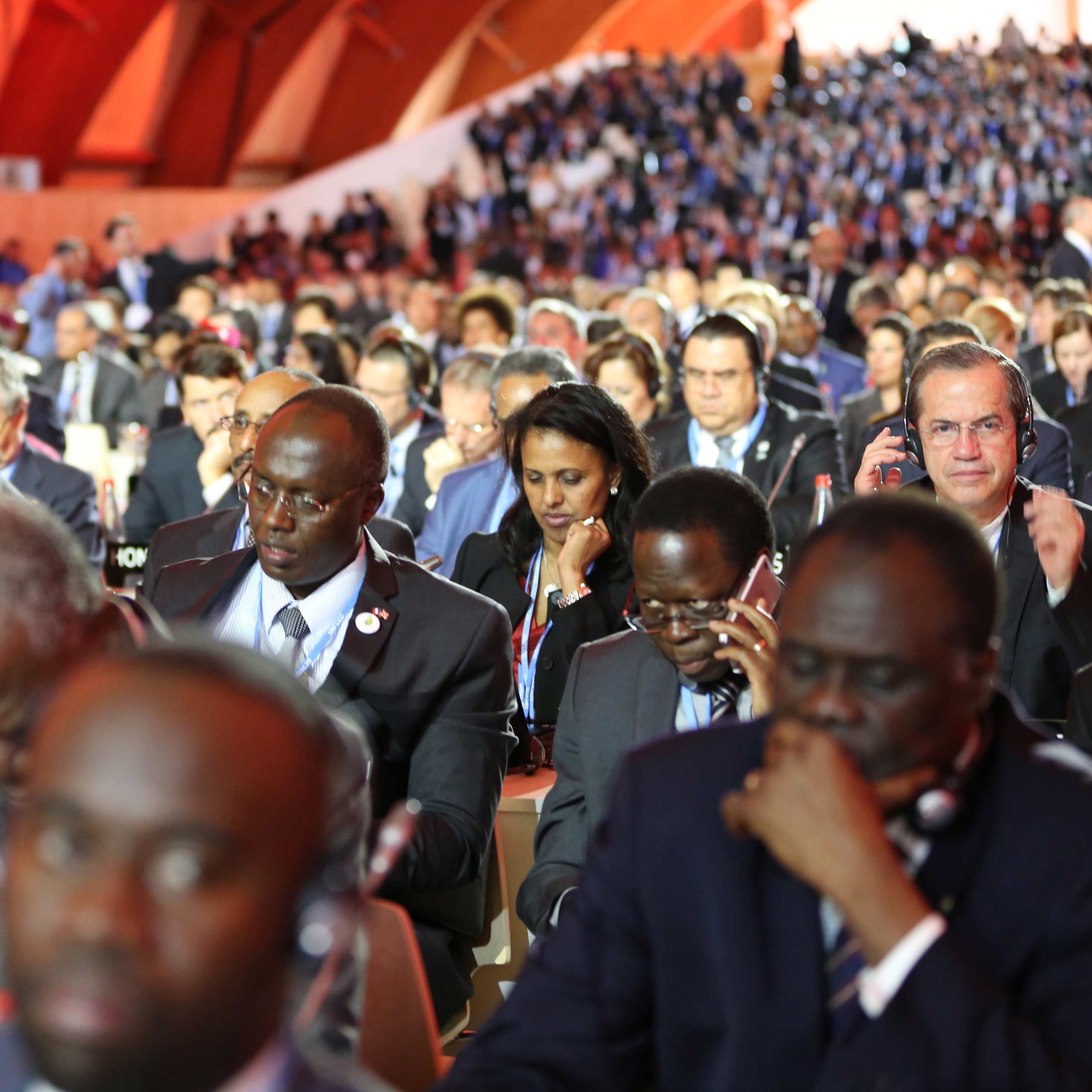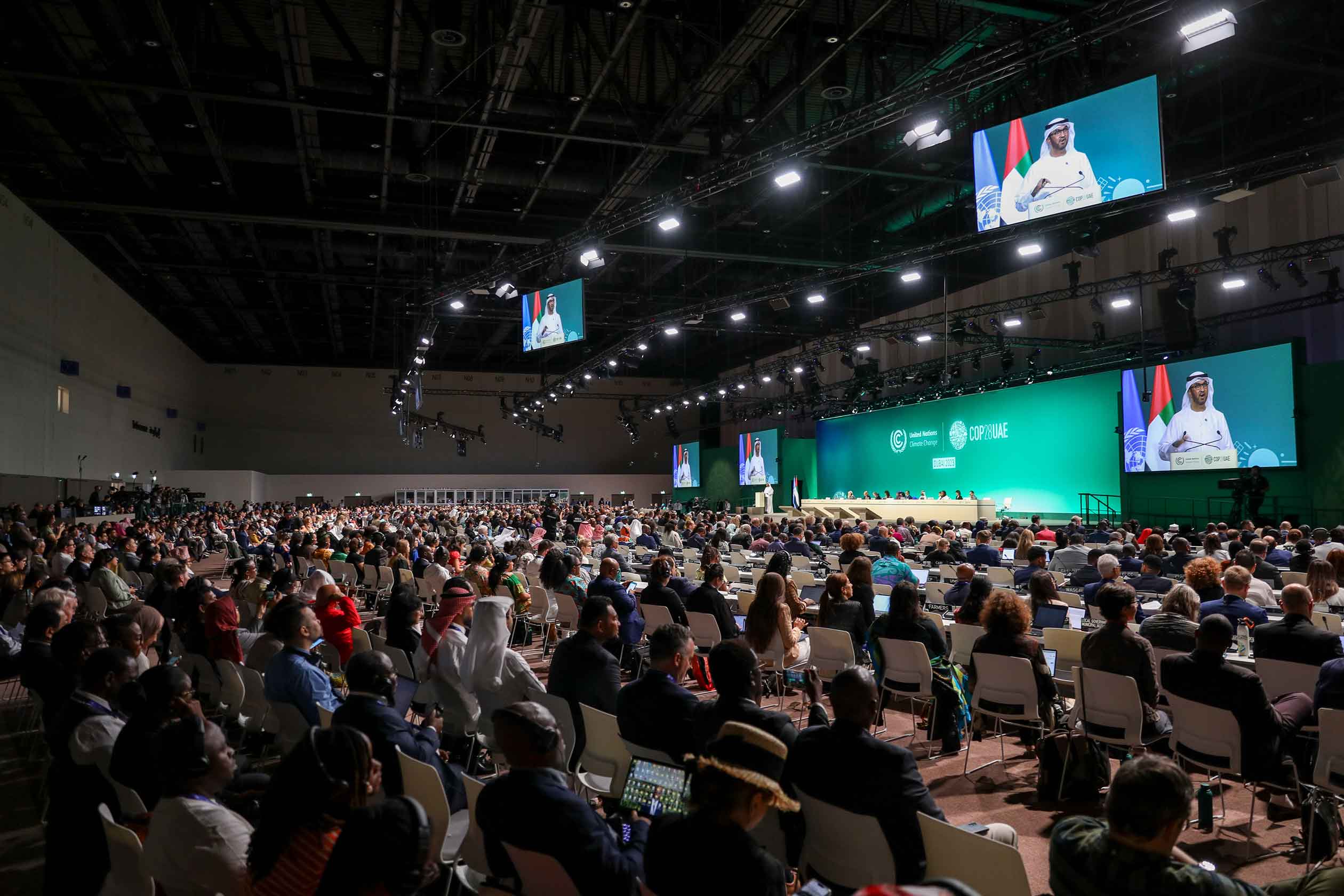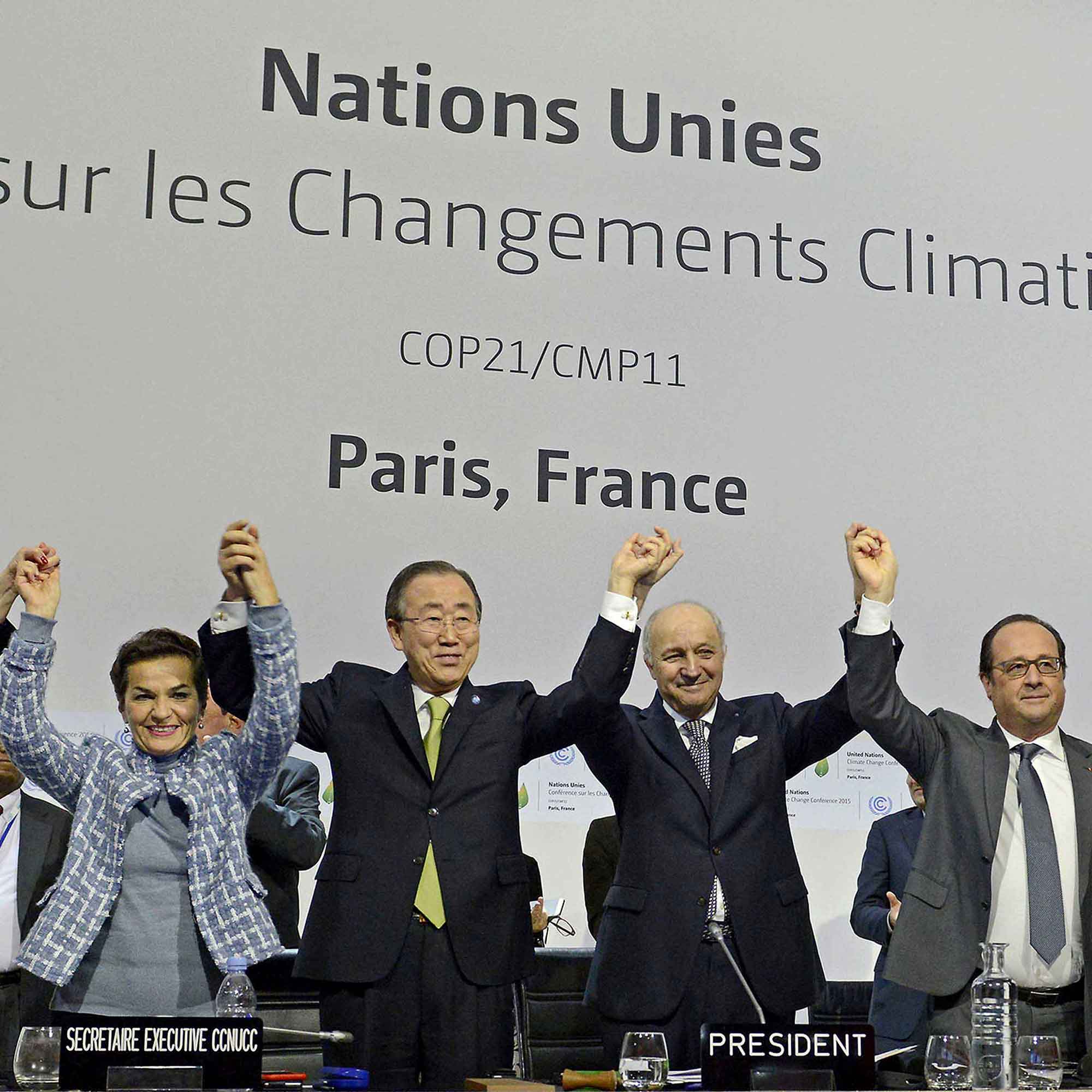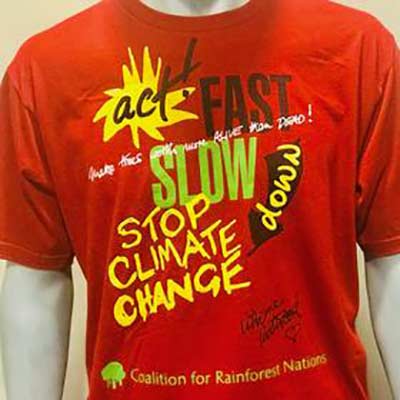Help Save Rainforests & Endangered Species
The Paris Agreement & UNFCCC REDD+
The Paris Agreement & UNFCCC REDD+
Heads of delegations at the 2015 United Nations Climate Change Conference (COP21), which led to the signing of the Paris Agreement.
The Paris Agreement is an international climate treaty that aims to limit global warming to well below 2 degrees Celsius, preferably to 1.5°C degrees.
What is the Paris Agreement?
The Paris Agreement is an international climate treaty that aims to limit global warming to well below 2 degrees Celsius, preferably to 1.5°C degrees Celsius, compared to pre-industrial levels.
To achieve this long-term temperature goal, countries aim to reach global peaking of greenhouse gas emissions as soon as possible to achieve a climate neutral world by mid-century. It was adopted by 196 Parties at COP 21 in Paris, on 12 December 2015 and entered into force on 4 November 2016.
The Paris Agreement is an undisputed milestone in the fight against the climate emergency. It sets out the first-ever framework for global action against greenhouse gas emissions from both developed and developing countries. It represents elements of previous climate actions plans and agreements within the UNFCCC. Unlike the Kyoto Protocol, which established legally binding reduction commitments for developed countries, the core of the new agreement puts forth a voluntary approach agreed upon by all heads of state and government in 2009 in Copenhagen, Denmark.
Adoption of the Paris Agreement 12th December 2015
This video explains the basics of the Paris Agreement: the international UN treaty of 2015 that aims to slow the climate emergency.
Participants attend a plenary meeting during the World Climate Change Conference 2015 (COP21) in Le Bourget, near Paris, France
Climate Action Plans
Each nation sets out its own climate action plans for reduction of emissions of greenhouse gasses. These national plans are called “NDCs,” which stands for Nationally Determined Contributions. Each country commits to developing strategies for voluntary greenhouse gas reductions rather than top-down mandated emissions reduction targets, as was the case with the Kyoto Protocol. Specifically, the Paris Agreement confers upon national governments the freedom to determine, at their own discretion, their level of ambition to contribute towards the fight against climate change.
The global stocktake is a process for countries and stakeholders to see where they’re collectively making progress with their NDCs towards meeting the goals of the Paris Climate Change Agreement – and where they’re not. The first-ever global stocktake took place at the UN Climate Change Conference (COP28). Their next round of NDCs is due in 2025.
The global stocktake is designed to ‘take stock’ of the implementation of the Paris Agreement and assess progress towards achieving the pact’s goal to limit global warming to 1.5 degrees Celsius.
REDD+ under the Paris Agreement
REDD+ can help countries meet their Paris Agreement targets or NDCs. Under the Paris Agreement, all countries have agreed to reduce their emissions according to the national targets they’ve set for themselves. Developing countries can use REDD+ to meet their NDCs — it delivers emissions reductions cost-effectively while protecting their forests.
REDD+ is enshrined in Article 5 of the Paris Agreement as the method to stop deforestation by 2030 using Article 6 to finance government action. The articles read:
Article 5, Paragraph 1
Countries (referred to as Parties) should take action to conserve and enhance, as appropriate, sinks and reservoirs of greenhouse gases as referred to in Article 4, paragraph 1(d), of the Convention, including forests.
Parties are encouraged to take action to implement and support, including through results-based payments, the existing framework as set out in related guidance and decisions already agreed under the Convention for: policy approaches and positive incentives for activities relating to reducing emissions from deforestation and forest degradation, and the role of conservation, sustainable management of forests and enhancement of forest carbon stocks in developing countries; and alternative policy approaches,…
It is important to highlight that this second paragraph of Article 5 encourages countries to take action to implement and support the existing framework for REDD+. It is therefore the duty and commitment of all rainforest nations to give REDD+ the necessary relevance by supporting its implementation in line with all UNFCCC decisions.
The implementation of REDD+ activities in developing countries at the national level still varies in many respects and depends strongly on national circumstances. What is certain is that all countries must follow the set of principles and requirements established at international level under the UNFCCC process and now defined by Article 5 of the Paris Agreement.
Article 5, Paragraph 2 also clearly formalizes the architecture of the REDD+ framework and all methodological details and guidance adopted under the UNFCCC up to the Paris Agreement (see: 4. How UNFCCC REDD+ works)
Additional Options to Achieving Climate Action Plans
Further, the CMA agreed on Article 6 of the Paris Agreement, which recognizes that Parties may choose to pursue voluntary cooperation in the implementation of their NDCs[1] to allow for higher ambition in their mitigation and adaptation actions and to promote sustainable development and environmental integrity.[2]
When engaging in cooperative approaches that involve the use of internationally transferred mitigation outcomes (ITMOs) towards NDCs, Parties must promote sustainable development and ensure environmental integrity and transparency, including in governance, and shall apply robust accounting.[3]
ITMOs may be created through cooperative approaches, such as REDD+ result-based payments, and have the following characteristics, as agreed by the CMA:
- Nature – ITMOs are real, verified, and additional emission reductions and removals measured in tons of CO2 equivalent[4]
- Authorization – All ITMOs are authorized by the national government[5]
- Corresponding adjustments Are applied to all ITMOs that are transferred, regardless of who purchases them. This ensures no double-counting.[6]
- Vintage – The CMA only allows post-2020 emission reductions or removals to be eligible as ITMOs[7]
Each Party participating in a cooperative approach that involves the use of ITMOs shall ensure that:[8]
- It is a Party to the Paris Agreement,
- It has prepared, communicated, and maintained an NDC,
- It has arrangements in place for authorizing the use of ITMOs,
- It has arrangements in place for tracking ITMOs,
- It has provided the most recent national inventory report,
- Its participation contributes to the implementation of its NDC and long-term low-emission development strategy, and the long-term goals of the Paris Agreement.
Thus, under the UNFCCC, developing countries may issue REDD+ results under Article 5 that can be converted to ITMOs under Article 6.2 by adhering to CMA guidance and fulfilling the participation, reporting and verification requirements.
[1] Nationally Determined Contributions
[2] Article 6, paragraph 1, of the Paris Agreement
[3] Article 6, paragraph 2, of the Paris Agreement
[4] Decision 2/CMA.3, paragraphs 1a-c
[5] Article 6, paragraph 3, of the Paris Agreement
[6] Decision 2/CMA.3, paragraphs 6 and 16
[7] Decision 2/CMA.3, paragraph 1e
[8] Decision 2/CMA.3, paragraph 4
Opening plenary session at COP28, Dubai, 2023
Halting and Reversing Deforestation and Forest Degradation by 2030
At COP28, Dubai, the UAE Consensus Agreement achieved a milestone in recognizing the need to reverse deforestation by 2030, outlined in paragraph 33:
…the importance of conserving, protecting, and restoring nature and ecosystems towards achieving the Paris Agreement temperature goal, including through enhanced efforts towards halting and reversing deforestation and forest degradation by 2030.
Although previous pledges have been made to stop deforestation, such as 2020 Glasgow Leaders’ Declaration on Forests and Land Use, the commitment was a landmark as all 192 countries decided this should be accomplished in accordance with the rules and methodologies agreed under the UNFCCC and the Paris Agreement.
This agreement allows for the full implementation of Article 5.2 on forests under UNFCCC REDD+, using Article 6 carbon markets as the tool to provide climate finance to sovereign nations for conserving rainforests at national level. COP28 also succeeded in sending a clear signal that Article 6 on UN carbon markets must uphold the highest level of climate ambition, environmental integrity, transparency, and human rights.
…the need for enhanced support and investment, including through financial resources, technology transfer and capacity-building, for efforts towards halting and reversing deforestation and forest degradation by 2030 in the context of sustainable development and poverty eradication, in accordance with Article 5 of the Paris Agreement.
Financing REDD+
The Paris Agreement recognizes the need for developing countries to receive climate finance in return for the net emissions reductions that they have accomplished by slowing deforestation. Despite emission reductions of 13.5 billion being achieved by developing nations under REDD+ since 2005, only 369 million tons of CO2eq have been paid for.
Governments, corporations, and individuals are all eligible to support developing countries with climate finance by purchasing REDD+ Results and Internationally Transferable Mitigation Outcomes. Private sector finance has always been viewed as integral to the success of the REDD+ framework, and there has never been a COP decision that ruled REDD+ out of the carbon markets. A reference to REDD+ finance is included in Decision 1/CP.21, notably in paragraph 55:
With the help of REDD+ Paris Agreement-compliant carbon credits, developed country governments, corporations, and citizens can now achieve ambitious carbon neutral goals at a scale unimaginable until recently. And in the next few years, our countries will bring a multi-gigaton pipeline of carbon reductions online.
Decision1/CP.21, paragraph 5
…Recognizes the importance of adequate and predictable financial resources, including for results-based payments, as appropriate, for the implementation of REDD+; while reaffirming the importance of non-carbon benefits associated with such approaches; encouraging the coordination of support from, inter alia, public, and private, bilateral, and multilateral sources, such as the Green Climate Fund, and alternative sources in accordance with relevant decisions by the Conference of the Parties.
At COP27, Egypt, the need for climate finance from both public and private sources was reiterated and formalized in section 14 on Forests in the Sharm-El Sheikh Implementation Plan with the inclusion of Footnote 30. The footnote refers to previously recognized COP decisions, 1/CP.16, and 9/CP.19 (see – 5. How REDD+ was created [hyperlink), that encourage private sector finance for developing countries in return for accomplished emissions reductions under the REDD+ mechanism.
Ève Bazaiba, Environment Minister of the DRC, Malcolm Stufkens, Vice Minister of Environment of Honduras, and CfRN’s Kevin Conrad meet with Wael Aboulmagd, Special Representative of the COP27 Presidency

